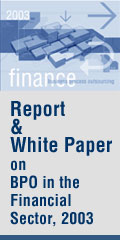|




|
Rupee Appreciation To Increase Exporters Profit Margins By 15%
Contrary to apprehensions that Indian exports would decline as result of rupee emerging stronger but the latest estimates made by the Associated Chambers of Commerce and Industry of India (ASSOCHAM) reveal that stronger rupee will bring in rich dividends for Indian Inc and increase its profit margins between 12-15% in long run as exporters are bringing in new technologies with cheaper imports for expanding their existing capacities.
The aforesaid findings are incorporated in the ASSOCHAM Study on `Impact of Rupee Appreciation of India’s Exports Vis-ŕ-vis Economy’, clearly highlighting that the balanced view of rupee getting stronger is that it has already reduced costs of imports and encouraged domestic manufacturing with technological upgradation. As a result, capacities expansions of Indian Inc are moving on faster speed which will make Indian exports much more competitive for developing economies.
“The sectors that are likely to gain a great deal with rupee becoming stronger include petro and petro products, engineering goods, gems and jewellery, drugs and pharmaceuticals as these have imported inputs with respective percentage of 77.18%, 21.55%, 92.44% and 19.41%.
Major impact of rupee appreciation so far has been agro and food processing, auto and auto components, leather and leather products and cotton, textiles and apparel sector with respected imported inputs of 11.73%, 13.54%, 15.66% and 10.11%.
The other sectors on which rupee appreciations so far had moderate impact included drugs & pharmaceuticals with 91.4% imported inputs and engineering goods that had 21.55% imported inputs.
The Chamber holds that a stronger rupee would reduce the cost of imports and would have some positive impact on those exporters who have large import contents which is totally justified with figures mentioned above, further says Mr. Dhoot.
The ASSOCHAM Paper has recommended that if companies are able to expand, their capacities in the rupee appreciating scenario, they would in the long run, definitely be in win-win situation because demand or Indian products in developed countries is not going to slowdown. The Indian Inc. would be able to export more at very competitive prices as a result of capacity building through technological advancement and increase its margins by 10-15%.
However, a substantial part of Indian exports like gems and jewellery, petroleum products etc. have large import contents. These commodities would derive some benefit from the appreciation of the Rupee. Even if the price of petroleum products shoots up in the international market, the benefits of a lower cost of import due to stronger Rupee would percolate down to the exporters. A stronger rupee would also reduce the cost of imports of machinery and technology and in the long run these would have positive benefits for the Indian manufacturers.
One area where India competes with the global developed markets as also the emerging markets is in regard to export of computer software. The appreciation of the rupee, in the longer run, is going to affect the IT services sector also. However, through adjustments in margins and higher efficiency and prudent hedging of exposures, this sector may be able to overcome such adverse situation.
The Chamber Paper further points out that the appreciation of the rupee has to be viewed in the background of the higher level of inflation prevailing in the recent past. While a stronger rupee would have a negative impact on export growth, one would also need to understand that over a period continuing higher inflation would ultimately lead to rise in domestic price of commodities, which are essential inputs for exporters. This would also indirectly reduce export competitiveness in the global markets even with a stable exchange rate. On balance, the appreciation of rupee has its positive aspects as well.
ASSOCHAM believes that while one would have to accept that sharp appreciation of the rupee in a short span of time would have its effect on the country’s exports but one would have to live with fluctuations of exchange rate, the contours of the global markets are changing, target markets are now wider and diverse.
The Chamber has taken a position in its latest Publication that demand for Indian exports in developing countries is not going to slow and the impact of rupee appreciation will remain confined to sectors that are domestically driven.
Equally important is to address the various other issues such as finance, transaction costs, delays, simplification of documentation and better infrastructure etc. It would also be seen that even during periods of appreciation of rupee the export growth has remained buoyant.
CLICK FOR MORE FEATURES & STORIES
|
|



|








